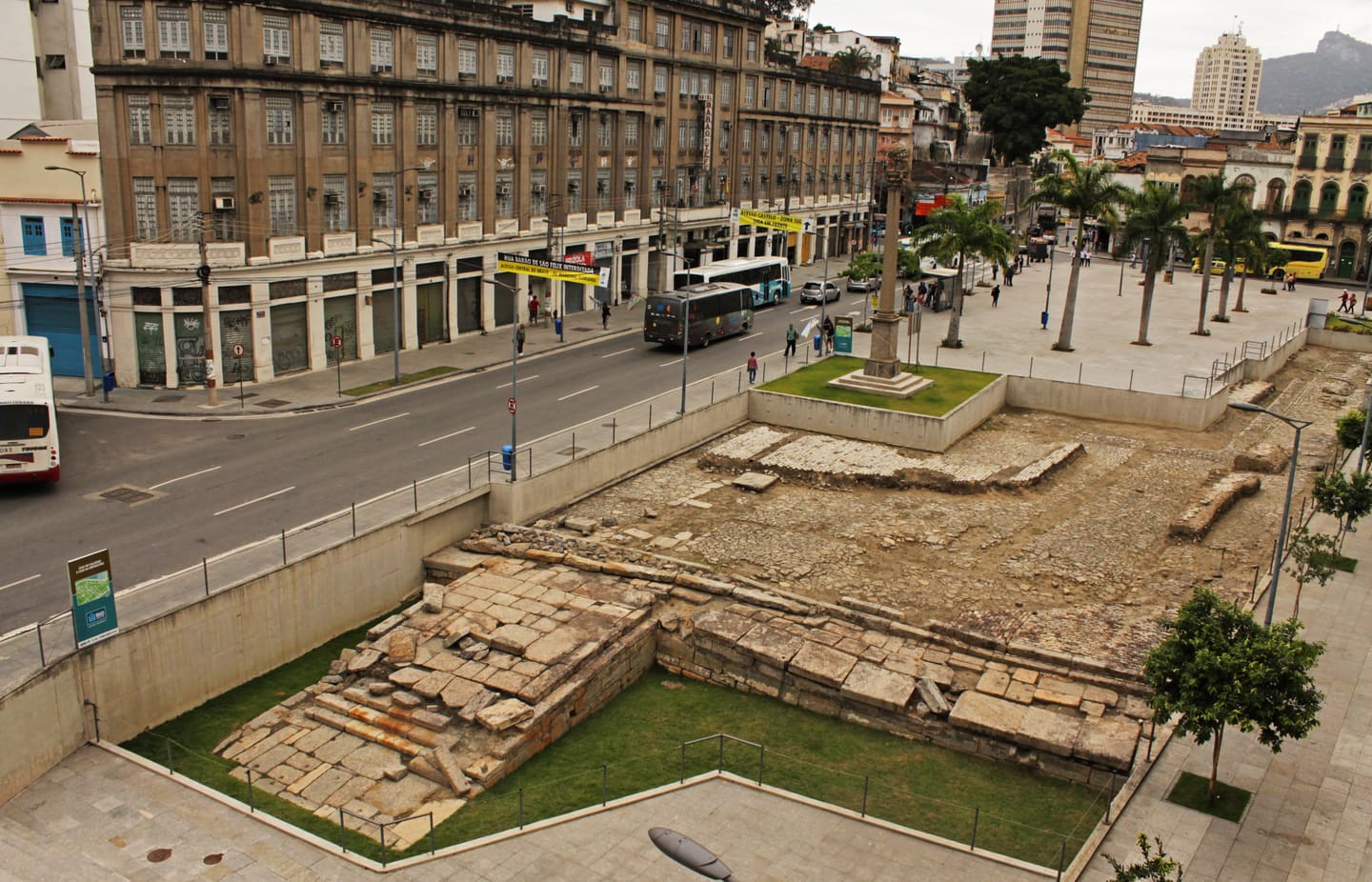The Valongo Wharf archaeological site, in downtown Rio de Janeiro, reopened in November after undergoing renovation work. The restoration of the monument cost BRL 2 million and included the installation of educational signage, exhibition panels, and railings.
A world cultural heritage site recognized by the United Nations Educational, Scientific, and Cultural Organization (UNESCO) since 2017, the wharf was the main port for the disembarking of enslaved Africans in the Americas during the 18th and 19th centuries, according to Brazil’s historical and artistic heritage authority Iphan.
The remains of the historical structure were discovered in 2011 during excavations for the project to revamp the city’s port district.
“This memory must be preserved as a port of our history and a beacon of change that needs to ensure black people are in control of their present and future trajectories—a path that goes further and further away from the vicious past of slavery,” said Racial Equality Minister Anielle Franco.
Alexandre Nadai, communications coordinator for the Pretos Novos Institute, dedicated to preserving both tangible and intangible Afro-Brazilian heritage, described the wharf as a landmark of a crime against humanity: the enslavement of millions of Africans in the Americas.
“People have to learn about the Valongo complex in order to understand what happened and all the crimes that were committed against Africans—crimes that are still committed against black people. We need to get people to know this story if we are to mitigate all this structural racism our society was based upon.”
Little Africa
Valongo Wharf is located in a region known as Pequena África (“Little Africa”), due to its majority black population and its history linked to the African diaspora, with sites such as the Cemitério dos Pretos Novos (“Cemetery of the New Blacks”), a burial place for Africans who had recently landed in Valongo and died before being sold, and Pedra do Sal (“Salt Rock”), one of the cradles of Rio’s urban samba.
“It wasn’t just slave labor that came in through the whaf. They also brought a new possibility of civilization through their culture, spirituality, customs, and sociability, which greatly mark Brazilian society today. One cannot think of Brazil without capoeira, samba, or maracatu,” said Ivanir dos Santos, babalaô and history professor at the Federal University of Rio de Janeiro (UFRJ) and a member of the Wharf Management Committee.
Last month, Brazil’s social development bank BNDES also unveiled efforts to preserve and recognize African memory and heritage in Pequena África.
Among the measures is a technical cooperation agreement with various government bodies, including Iphan and the ministries of Culture and Racial Equality, aimed at drawing up a physical and spatial plan and to establish a cultural district in the area within three years.
Also announced was a consortium to issue a public notice to strengthen local cultural institutions, build a network of representatives of African memory and heritage in Brazil, and encourage the creation of a new tourist route linked to domestic and international Afro-tourism.
The consortium is made up of the Centre for the Articulation of Marginalized Populations (Ceap), the Black Fair Institute, and Diaspora Black, and will be tasked with raising BRL 20 million—half of which will come from the BNDES Cultural Fund and the rest from donors.
Management
After receiving 1 million slaves, the venue was deactivated in 1831 due to the ban on the transatlantic trade, Iphan reports.
In 1843, it was landfilled for the construction of a new pier to receive Princess Teresa Cristina, wife of Emperor Dom Pedro II, and was renamed Cais da Imperatriz (“The Empress’s Pier”).
After being discovered in 2011, Valongo Wharf was protected by Iphan in 2012, the same year it was opened to visitors. It became a Cultural Heritage Site of the City of Rio de Janeiro in 2013 and was named a World Heritage Site in July 2017.
However, in 2019, the one-year-old management committee, required by Unesco to monitor the efforts to preserve the archaeological site, was abolished after convening only twice. The committee was recreated in March of this year.
Fonte: Agência Brasil



